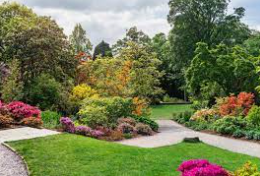It is lovely to have trees and shrubs in your garden as they not only provide some great shade in the warm summer sun but they also provide homes for numerous animals, including birds, squirrels and even lots of tiny insects. It is important that when you plant trees in your garden that you think about how you are going to maintain them and how big they are going to grow. Make sure that you plant them far enough away from your property, so they don’t start to affect your foundations. Tree roots will seek out water in any place that they can, so it is also important that you monitor your drains. If you notice any leaks or damage to your drains you should speak with a Drain Lining Maidenhead company like https://www.drainpower.co.uk/drainage-services/drain-lining/drain-lining-maidenhead/ to have these repaired as soon as possible.

Here are some important maintenance tips when it comes to the trees in your garden.
Debris
Unless you plant evergreens, your trees will lose their leaves during autumn, and you will need to consider how you are going to go about clearing these up. Some people like to use a leaf blower to gather all the leaves in one area before picking them up. You can put leaves into a compost bin or on a compost heap as they will help to add vital nutrients to the compost. It is important that you check fallen leaf piles for wildlife as hedgehogs, in particular, like to make nests in leaves.

Roots
Tree roots are incredibly strong, and they can break up concrete, and this can mean that they can affect your foundations and any walls that you have around your home. There is a general rule of thumb that the roots of a tree will travel as deep and wide as the canopy has grown at the top of the tree. By regularly pruning your tree, you can help prevent it from growing too big.
Weather
Trees can withstand all types of weather, but if your tree is very tall or it has a disease or pest that has affected its strength, you will need to be careful during storms and high winds. Tree branches can break, and these can then become a safety hazard.


